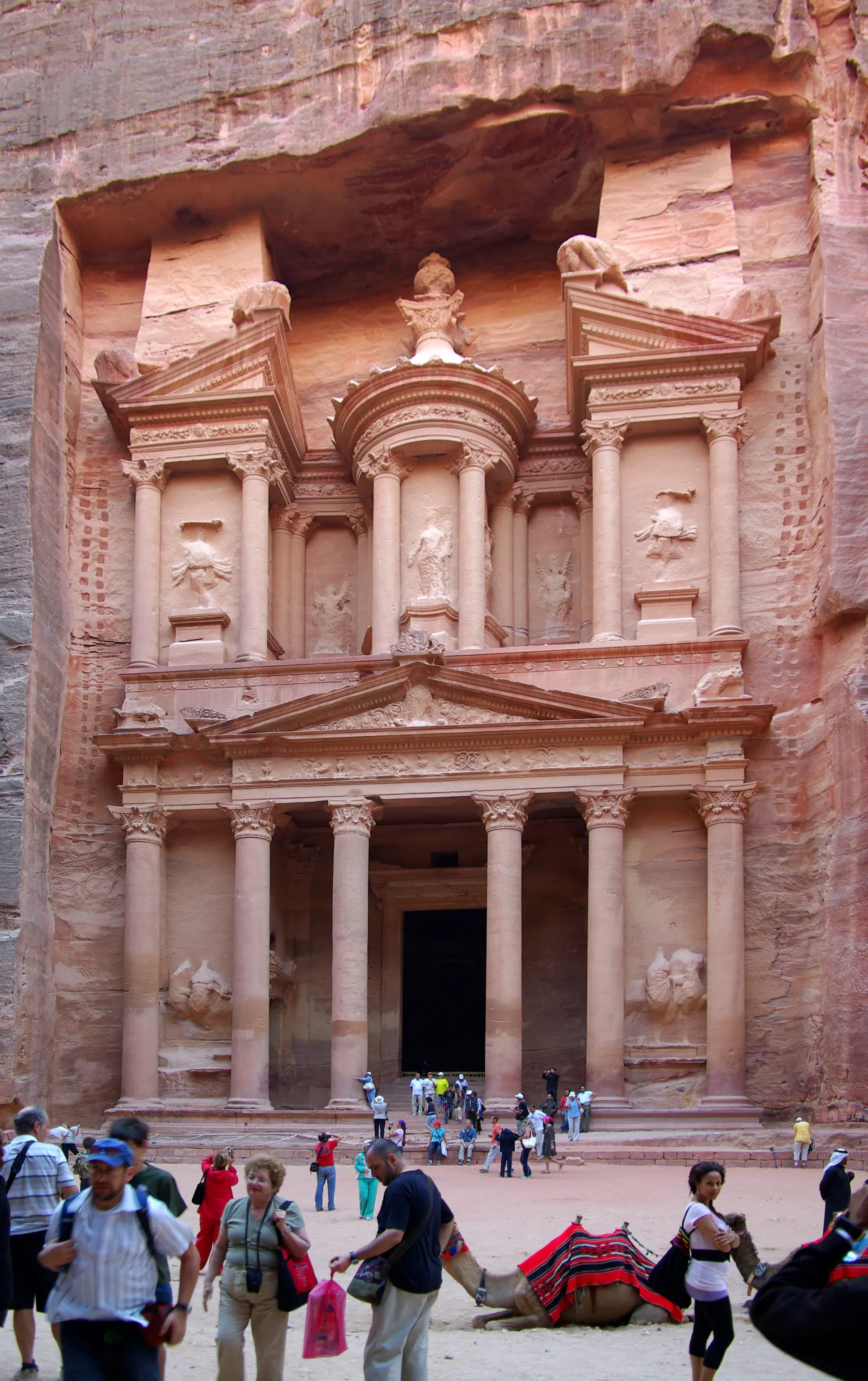
Petra's Rose-Red Treasury Monument Carved into Nabataean Stone
Gateway to Ancient Arabia's Legendary Spice Routes and Commerce
About This Site
Petra represents one of humanity's most exceptional archaeological treasures, showcasing the pinnacle of Nabataean civilisation through its extraordinary rock-cut architecture and sophisticated water management systems. This Rose-Red City served as the ancient trading capital that controlled lucrative frankincense and silk routes whilst demonstrating remarkable desert engineering that sustained 20,000 inhabitants in harsh conditions. As a UNESCO Heritage Site, Petra creates a cultural crossroads where ancient Arabian, Egyptian, and Hellenistic influences converged through elaborate ceremonial monuments and innovative urban planning. Today it stands as the Middle East's premier archaeological destination and Jordan's crown jewel of heritage tourism, attracting millions of visitors annually seeking connections with ancient civilisations.
Why It Matters
This ancient capital demonstrates outstanding universal value as a masterpiece of human creative genius, providing unique testimony to the Nabataean culture whilst representing an outstanding example of architectural achievement that illustrates a significant stage in human history through its innovative rock-cutting techniques and sophisticated urban planning.
Archaeological Marvels of the Ancient World
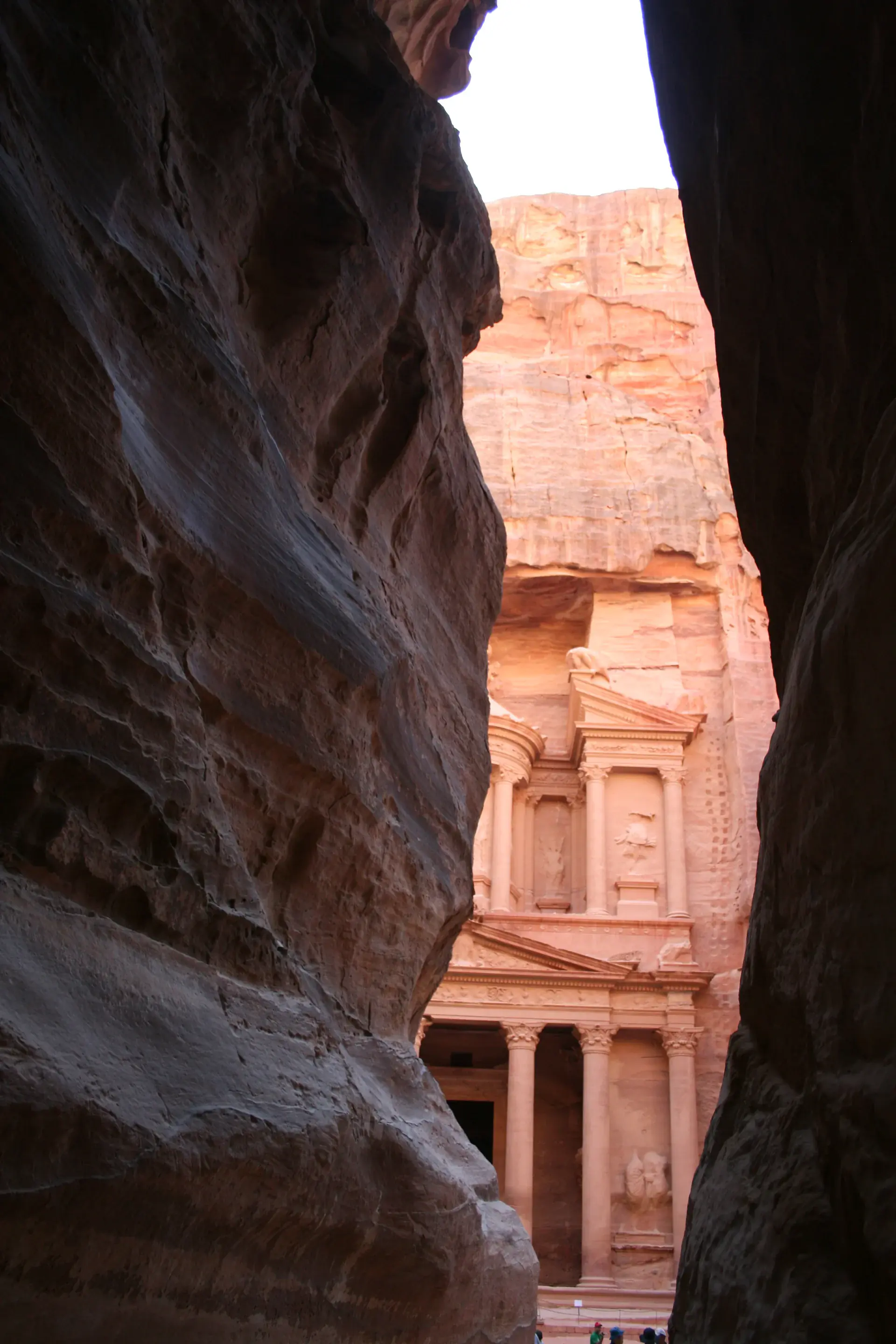
Nabataean Rock-Cut Architecture
Marvel at the extraordinary craftsmanship of Nabataean stonemasons who carved elaborate facades directly into living rock over 2,000 years ago. The Treasury features intricate columns, pediments, and sculptural details blending Hellenistic, Egyptian, and Mesopotamian influences into uniquely Nabataean style. These magnificent tomb facades represent one of humanity's greatest architectural achievements, demonstrating how Nabataeans transformed natural rock formations into sophisticated ceremonial monuments. The precision achieved without modern tools reveals advanced mathematical knowledge and artistic vision that continues inspiring architects today. Each facade tells stories of wealth, power, and spiritual beliefs through carefully carved symbols and decorative motifs spanning generations of skilled craftspeople.
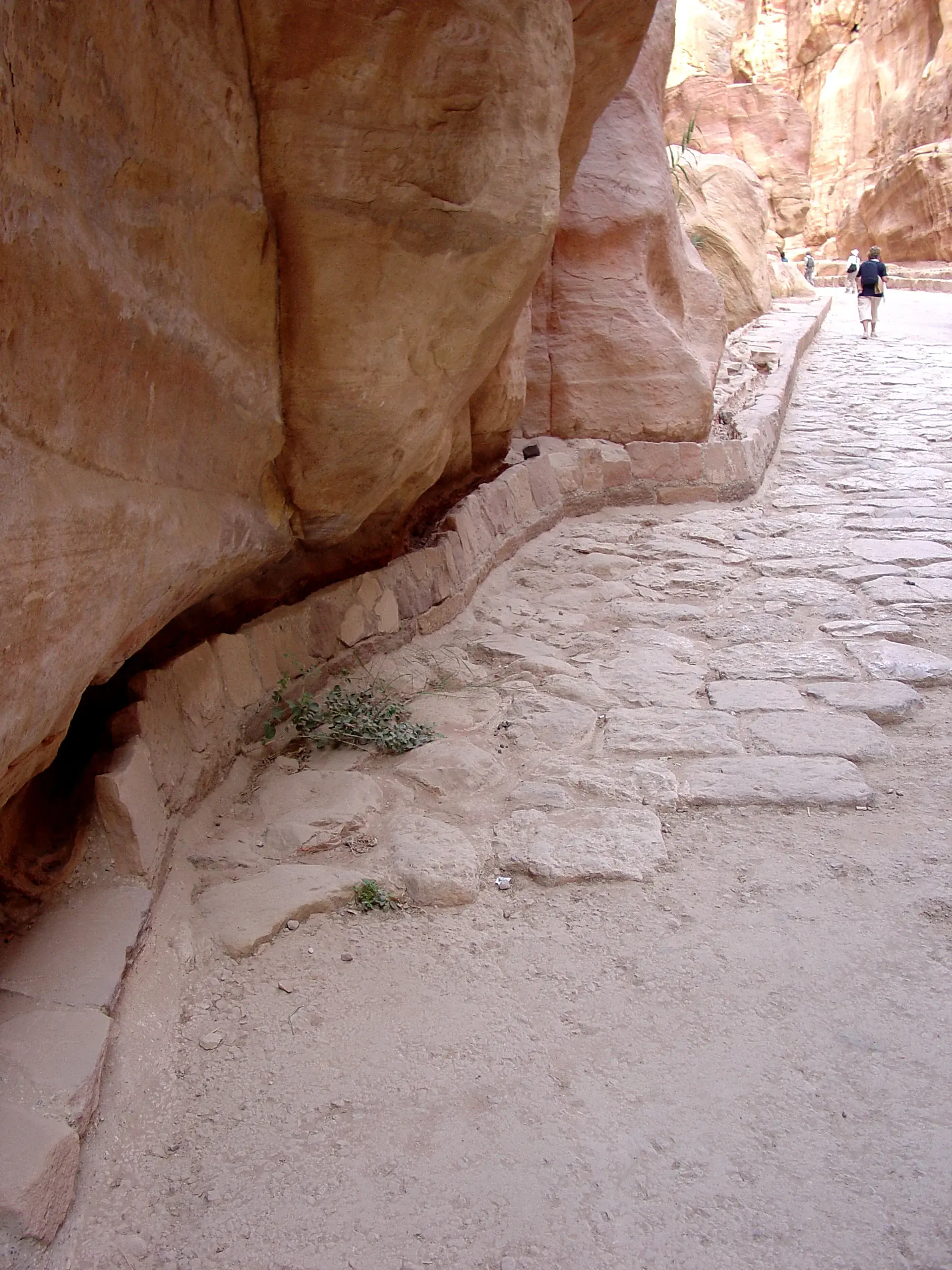
Ancient Water Management System
Discover the ingenious hydraulic engineering that made Petra possible in the harsh desert environment. Nabataeans created elaborate networks of dams, cisterns, and channels that collected and stored precious rainwater, transforming arid landscape into thriving city supporting 20,000 inhabitants at its peak. This sophisticated system included over 200 cisterns, carved channels guiding water through the Siq, and settling tanks filtering sediment from flash floods. The infrastructure enabled Petra to flourish as trading hub, supporting agriculture, domestic needs, and elaborate fountain displays that impressed visiting merchants from across the ancient world. Many ancient systems remain functional today, demonstrating exceptional engineering longevity and continuing to manage seasonal water flows.
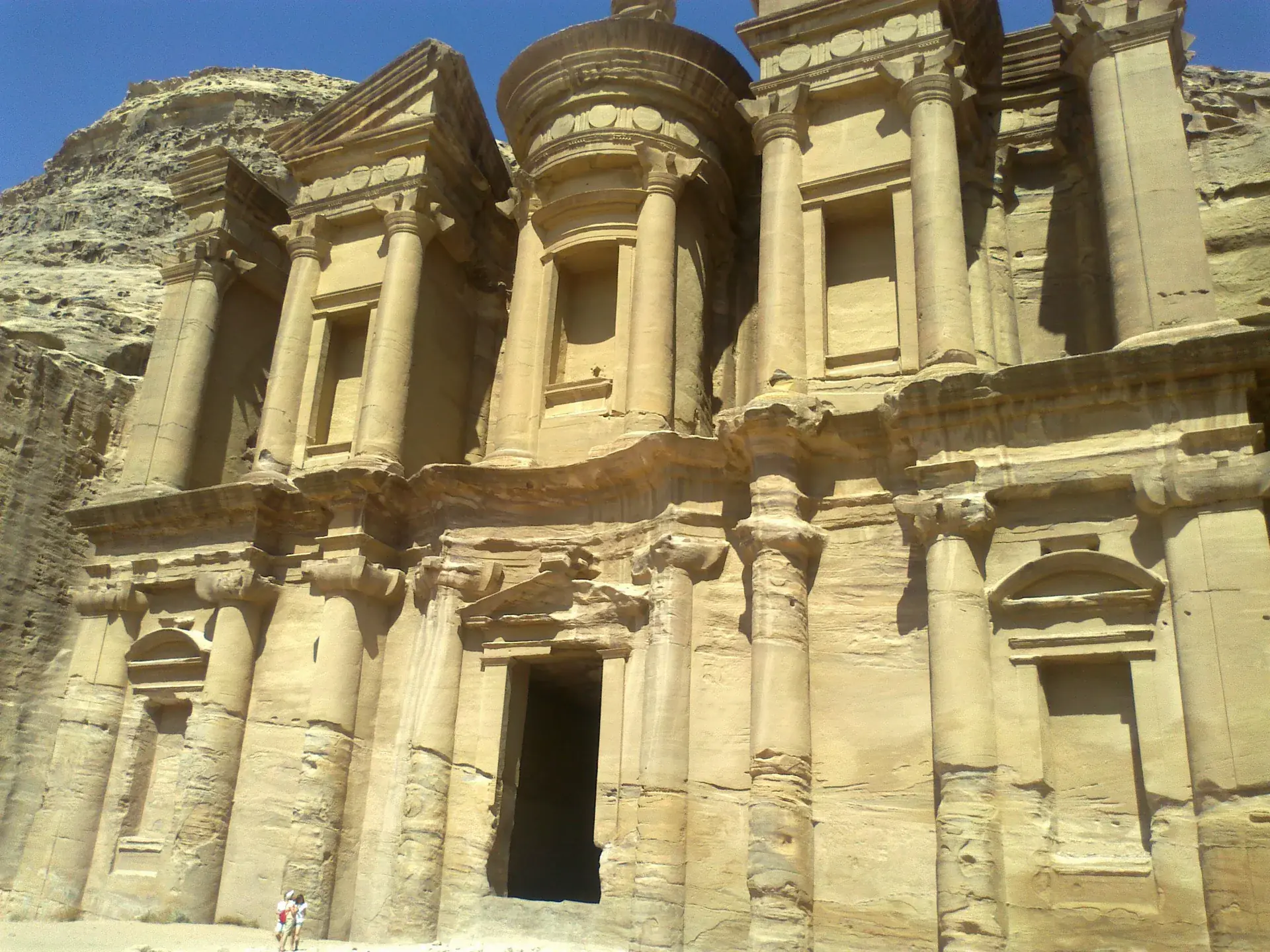
Monastery Mountain Trek
Undertake the challenging but immensely rewarding 45-minute climb up 800 hand-carved steps to reach the Monastery (Ad-Deir), Petra's crown jewel. This largest monument in Petra rewards hikers with breathtaking views across Jordanian desert and intimate encounter with Nabataean engineering on monumental scale. The trek follows ancient pathways, passing smaller tombs and offering fascinating glimpses into daily life. The Monastery, standing 45 metres high and 50 metres wide, represents the pinnacle of Nabataean architectural achievement, even surpassing the Treasury in scale. Unlike the Treasury, which served as tomb, the Monastery likely functioned as temple and ceremonial gathering space. The summit provides unparalleled panoramic vistas extending to the surrounding mountains and valleys.
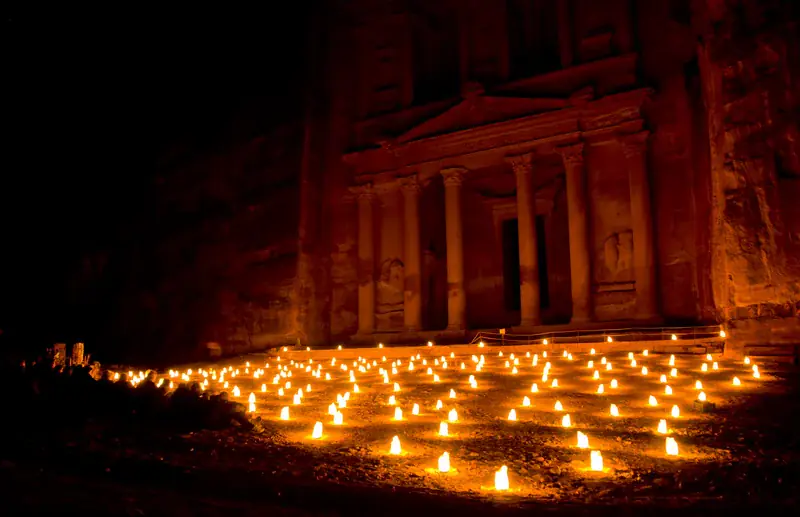
Petra by Night Experience
Experience the magic of Petra illuminated by 2,000 candles during this enchanting evening event held several times weekly. Walk through the Siq by candlelight to reach the Treasury, where traditional Bedouin music creates unforgettable atmosphere connecting visitors to ancient spiritual significance. This carefully orchestrated experience recreates the wonder ancient travellers felt approaching this hidden city for the first time. Candlelight reveals different aspects of rock formations and architectural details, whilst acoustic properties amplify haunting melodies throughout the canyon. The experience culminates with the Treasury facade illuminated against star-filled desert sky, creating profoundly moving conclusion that lingers in memory. This special event transforms Petra from daytime archaeological site into mystical journey through ancient Nabataean culture.
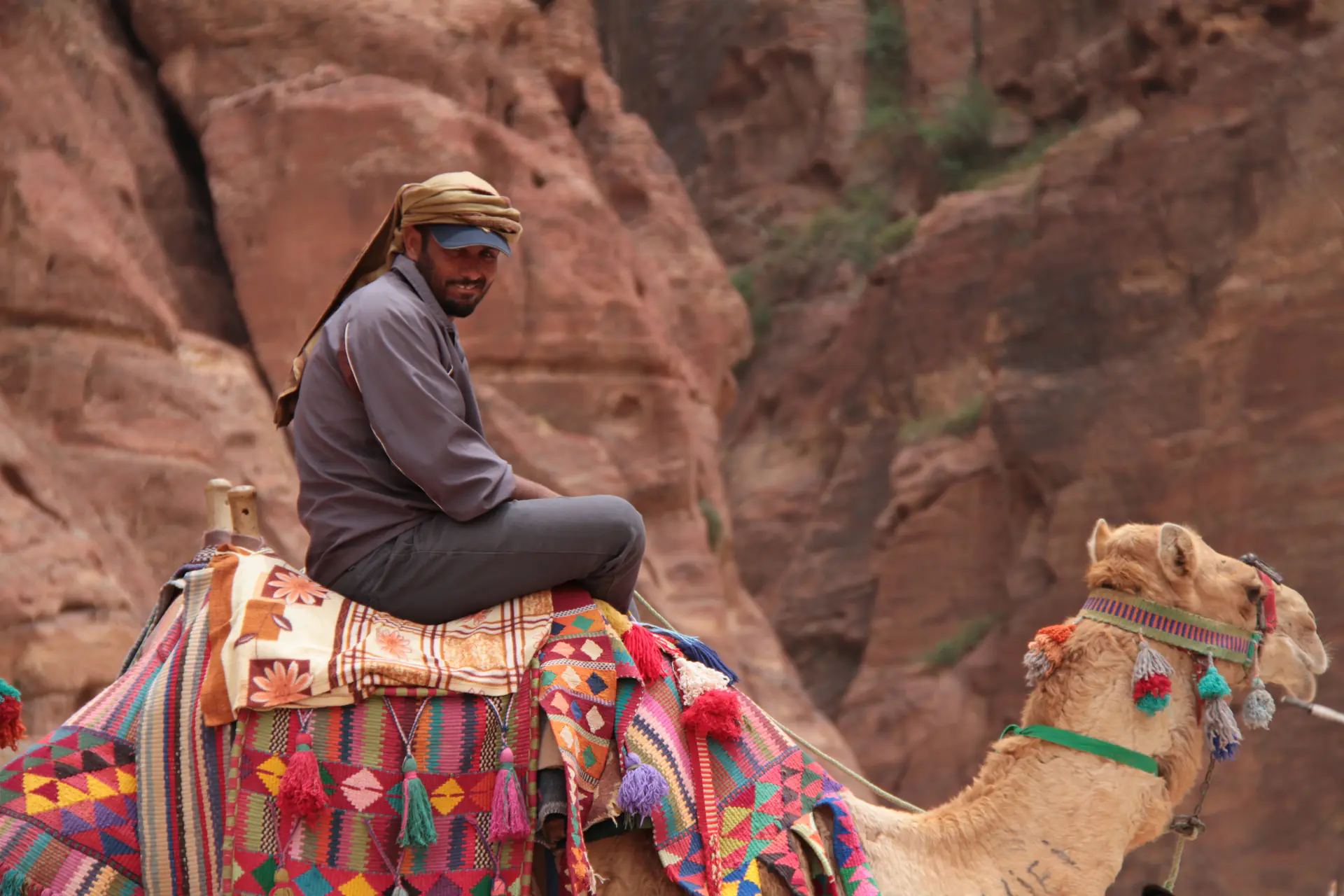
Living Nabataean Heritage
Connect with descendants of Nabataeans through interactions with local Bedouin communities who maintain traditional crafts, storytelling, and desert survival skills. Their presence adds living cultural dimension to Petra's ancient stones, bridging 2,000 years of continuous human presence. Bedouin guides share oral histories revealing details about Petra's significance that cannot be found in archaeological texts alone. Their traditional crafts including metalwork, weaving, and pottery continue techniques possibly used by original Nabataean inhabitants thousands of years ago. These cultural exchanges provide insights into desert life, traditional hospitality, and enduring connection between people and place spanning generations.
Location & Planning
Petra is accessible year-round with organized tours from Amman and Aqaba. Book tickets online to avoid queues. Consider hiring a local guide for historical context. Facilities include restaurants, restrooms, and visitor centre near the entrance.
Loading map...
Frequently Asked Questions
Petra is an ancient Nabataean city carved directly into rose-red sandstone cliffs in southern Jordan. Famous for stunning rock-cut architecture including the iconic Treasury, sophisticated water management systems, and role as major trading hub controlling ancient frankincense and silk routes between Arabia and Mediterranean.
The Nabataeans built Petra starting in 4th century BC. These skilled Arab traders carved elaborate facades, tombs, and temples directly into living rock, creating architectural masterpieces blending Hellenistic, Egyptian, and Mesopotamian influences into unique Nabataean style throughout several centuries.
Petra earns this evocative name from its distinctive pink and red sandstone cliffs that dramatically change colour throughout the day. Mineral deposits in the multicoloured rock create stunning hues ranging from soft rose to deep crimson depending on sunlight angles.
Travel 150 kilometres south from Amman to Wadi Musa town near Petra entrance. Options include rental car (approximately 3 hours drive), tourist bus services, or guided tour packages. Purchase Jordan Pass online in advance for visa and entry savings.
March through May and September through November offer ideal weather with mild temperatures and comfortable hiking conditions. Visit early morning or late afternoon hours to avoid harsh midday desert heat whilst enjoying optimal lighting for photography of monuments.
Entry requires either Jordan Pass (recommended for significant savings) or on-site ticket purchase at visitor centre. No special permits needed for main archaeological areas. Petra by Night candlelit experiences require separate advance booking due to limited availability.
Sturdy hiking boots for rocky terrain, comprehensive sun protection including hat and sunscreen, lightweight clothing layers for temperature changes, and modest dress respecting local customs. Bring abundant water supplies and energy snacks for extensive walking throughout archaeological areas.
UNESCO World Heritage Criteria
Inscribed in 1985, this site meets 3 of UNESCO's 10 criteria for Outstanding Universal Value
Criterion (i): Masterpiece of human creative genius
Petra represents an extraordinary masterpiece of human creative genius through its monumental rock-cut facades like the Treasury and Monastery, demonstrating unprecedented artistry in transforming natural cliff faces into elaborate architectural monuments that seamlessly blend Nabataean innovation with Hellenistic influences.
Criterion (iii): Testimony to cultural tradition
The site provides exceptional testimony to the Nabataean civilisation, an Arabian culture that controlled crucial frankincense and silk trade routes whilst developing sophisticated desert survival techniques. Petra uniquely preserves evidence of this vanished culture that served as a cultural crossroads between Arabia, Egypt, and the Greco-Roman world.
Criterion (iv): Outstanding architectural/technological ensemble
Petra exemplifies outstanding architectural and technological achievement through its sophisticated water management systems that sustained 20,000 inhabitants in an arid desert environment, combined with advanced urban planning, innovative rock-cutting techniques, and monumental structures that demonstrate remarkable engineering capabilities across multiple construction phases spanning centuries.
Historical Context
Nabataean Kingdom (4th-2nd century BC-AD)
Petra served as capital of prosperous Nabataean Kingdom, controlling crucial trade routes for frankincense, myrrh, and silk between Arabia and Mediterranean. The city reached its architectural and economic zenith during this period, with elaborate rock-cut monuments and sophisticated water systems supporting 20,000 inhabitants.
Roman Annexation (106 AD)
Emperor Trajan incorporated Petra into Roman Empire as part of Arabia Petraea province. The city continued flourishing under Roman administration with construction of colonnaded streets, temples, and public buildings whilst maintaining commercial importance for several centuries.
Byzantine Period (4th-7th centuries)
Petra adapted to Christianity with several churches built including elaborate mosaic decorations. The city's importance as trading centre gradually declined as new maritime and desert routes bypassed the region, though religious pilgrimage maintained modest population through this era.
Islamic Period (7th century onward)
Under Islamic rule, Petra maintained small population with local Bedouin tribes preserving oral histories and maintaining cultural connections to ancient site. The city remained largely forgotten by wider world whilst Bedouin communities continued inhabiting caves and monuments.
Modern Rediscovery (1812-present)
Swiss explorer Johann Burckhardt reintroduced Petra to Western world in 1812. This discovery led to systematic archaeological excavation revealing extraordinary Nabataean achievements. UNESCO designated Petra World Heritage Site in 1985, recognising its outstanding universal value and ensuring preservation for future generations.
Conservation & Protection
Current Conservation Status
Comprehensive conservation programmes protect Petra's fragile sandstone monuments through international collaboration, advanced monitoring technology, community-based heritage preservation initiatives, and coordinated research efforts.
Conservation Challenges
- Sandstone erosion accelerated by wind, seasonal rainfall, and extreme temperature fluctuations affecting carved facade stability
- Tourism pressure exceeding sustainable limits requiring sophisticated visitor flow management and infrastructure upgrades
- Flash flooding risks threatening both ancient water management systems and contemporary visitor safety measures
- Balancing heritage site preservation with local Bedouin community rights and sustainable tourism development goals
Active Conservation Efforts
- Advanced digital monitoring systems continuously tracking structural stability and environmental conditions across major monuments
- Engineered visitor pathway networks reducing direct physical contact with fragile carved surfaces and archaeological remains
- International conservation partnerships bringing UNESCO expertise, advanced restoration techniques, and sustainable funding mechanisms
- Community-based tourism initiatives supporting traditional Bedouin livelihoods while maintaining cultural authenticity and heritage values
Image & Content Attribution
Research & Content Sources
Photography & Visual Media
Last updated: 11 October 2025